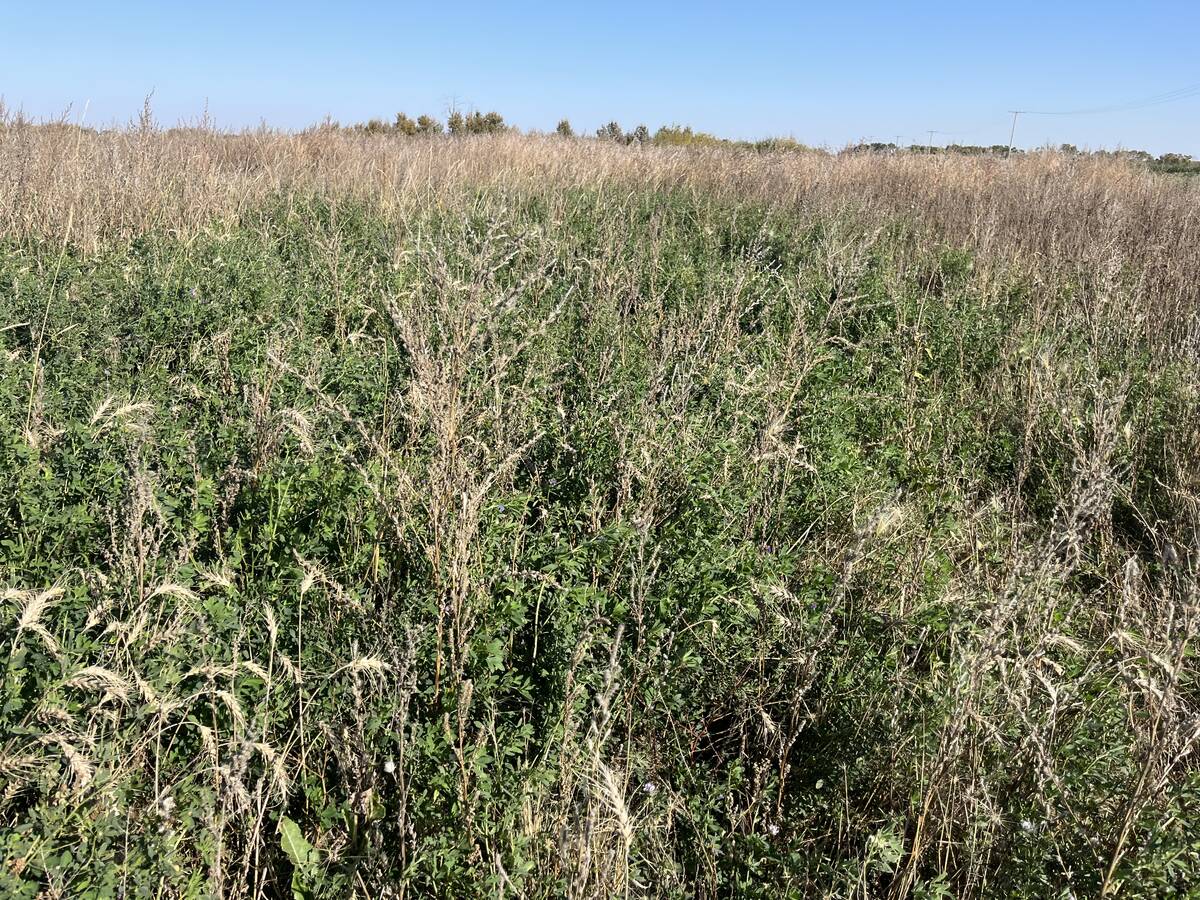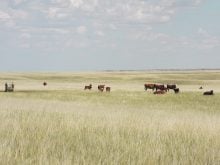The latest case of a porcine epidemic diarrhea virus outbreak in Alberta emphasizes the immense importance of strong biosecurity protocols for livestock operations.
Pork producers have some of the strictest biosecurity protocols of any livestock sector in Canada and they are continuing to try to improve their biosecurity practices and emergency response planning in an effort to control the spread of PED virus.
PED virus was first diagnosed in May 2013 in the United States and it has carved a path of destruction throughout pig operations throughout that country.
Read Also

Dormant seeding forages frees up farmer time and gets ahead of weeds
Dormant seeding isn’t common practice and can appear daunting, but there are some techniques to give Manitoba farmers an edge
The first Canadian case was confirmed in Ontario in January 2014 and Manitoba has also had several outbreaks, the most significant one occurring in 2017.
The PED virus poses no risk to human health or food safety, but it is a devastating virus that causes severe acute diarrhea in all ages of pigs and very high death rates in infected barns and huge economic losses.
Huge numbers of virus particles are shed in the feces of infected animals, and cross contamination of feed ingredients and animal transport trucks also appear to play a role in spreading the disease.
Collaboration between industry, provincial and federal authorities in previous outbreaks have managed to control the spread of the disease through enhanced biosecurity practices.
Lessons learned from the previous outbreaks emphasize the importance of industry participation in enhancing biosecurity protocols across all aspects of the swine sector.
The success of controlling these outbreaks in other provinces relied heavily on strong collaboration between primary producers, provincial government veterinarians, swine veterinary practices, and all of the various service industries, such as dead stock removal, trucking, feed suppliers and many others. Surge capacity was significantly challenging for both the diagnostic labs, as well as some of the service industries for the sector.
The outbreaks sparked a huge increase in samples submitted and because extensive vehicle cleaning and disinfecting was needed, it was necessary to dedicate some services to serve only infected areas to limit the spread of infection.
Biosecurity can be described as all of the management practices that prevent the movement of disease-causing agents between and within livestock operations. Biosecurity involves almost all aspects of farm management including environmental and manure management.
We can develop biosecurity plans for entire nations, regions or individual farms to help prevent the spread of infectious diseases.
Imagine if a new virus such as PED virus emerged within the beef or dairy cattle population in North America. The results could be catastrophic and the biosecurity practices of cattle producers would be severely challenged.
The beef industry in particular is not able to practice exclusion biosecurity to the same extent as the poultry or swine industry. There is no doubt the structure of the cattle industries and the greater exposure to the environment makes biosecurity more challenging to implement in cattle herds, but it does not make it any less important.
The CFIA with the collaboration of producer organizations, provincial and territorial governments and academia have established a number of national biosecurity standards for most of the livestock industries found within Canada.
Both the beef cattle and dairy cattle industries have documents describing how to implement biosecurity practices on your farm and what areas to focus on. The biosecurity standards are designed to help producers create biosecurity plans that will be specific to their farms.
Farm workers, family members, service providers and anyone who conducts business with or visits your farm should be made aware of the importance of biosecurity.
Some of the major management areas that the cattle biosecurity standards focus on include:
- animal health management
- animal additions and movement
- premises management and sanitation (a focus of the dairy document)
- management of the movement of people, vehicles, equipment and tools
- education, planning and record keeping
The documents are worth reading for all cattle producers. They can be found online on the Canadian Food Inspection Agency website.
Good biosecurity practices are just as important for cattle producers as they are for swine or poultry producers.
We rely on biosecurity to protect both our animals and our livelihoods. Biosecurity practices are usually fairly simple practices that must be done correctly, every day of the year.
It is always difficult to ascertain the benefits of biosecurity when no major outbreaks occur, but good biosecurity will usually result in less disease and healthier, more productive livestock. If a new disease emerges, we will be more prepared to deal with limiting its impact.














